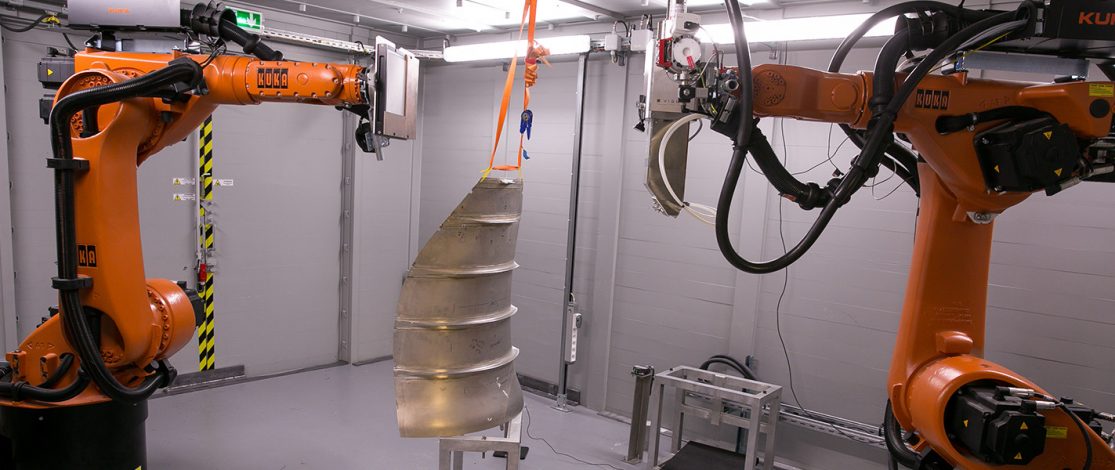The Non-Destructive Testing platform is used to develop new processes, testing methods, sensors, instrumentation, and processing algorithms for the detection of defects in industrial parts.
CEA-List’s Non-Destructive Testing (NDT) platform features innovative hardware and software for research and development in the field of non-destructive testing. The platform possesses all the principal industrial inspection techniques: ultrasound and guided waves, electromagnetic methods, radiography, and tomography. Its R&D partners include innovative energy, aeronautics, and railway companies such as Framatome, EDF, Dassault, Airbus, Safran, ArianeGroup, TechnipFMC, Alstom, Extende, and Eddyfi.
of facilities
in equipment
employees
patents
Two flagship NDT applications: adaptive ultrasound imaging and X-ray tomography.
Phased array ultrasonic NDT methods increase inspection speed, maximize defect detection, and improve imaging of inspected parts. However, these acoustic methods are very sensitive to local geometric variations during the inspection process. The adaptive imaging techniques developed allow the information obtained about the part’s geometry to be integrated in real time. They continuously adapt the ultrasonic waves and image reconstruction algorithms using the signals from the different transmitter/receiver pairs on the transducer array. These techniques are applied to immersed or flexible sensors in contact with the part.
Developments currently underway include real-time 3D imaging that raises significant technological challenges associated with processing thousands of signals at high speed using algorithmic optimizations and frugal approaches. The main difficulty will be to significantly increase performance without increasing the cost of electronic equipment.
Applications
Major projects
X-ray tomography reconstructs a 3D image of an object from a set of X-rays and is a valuable inspection method for the quality control of industrial parts. CEA-List has implemented specific algorithms designed to tackle two challenges associated with this technique. The first is to reduce acquisition times to accelerate inspection rates and increase equipment lifespans. The second is to perform robotic inspections, which are more flexible and better suited to inspecting large-sized parts.
The tools developed by CEA-List provide additional information on the reconstruction space, either through knowledge of the object to be reconstructed or through simulation. These developments include deep learning to minimize the reconstruction artifacts typically seen in low frame rate configurations. They also automatically define non-standard acquisition trajectories, optimized through simulation. These techniques, validated in the CIVA simulation environment and implemented on the robotic X-ray tomography unit, mean that a wide range of inspection configurations can be considered.
Applications
Major projects

The platform features a multi-resolution robotic X-ray tomography unit for inspecting large-sized part with complex geometry.
The platform’s foundation is CEA-List’s CIVA simulation software, developed specifically for NDT.
This software includes a set of simulation and analysis modules for NDT. The main techniques and physics principles used in the industry are available: ultrasound, guided waves, structural health monitoring, eddy current, X-ray radiography and tomography, thermography. In addition to simulation, CIVA offers many performance demonstration features and advanced imaging and processing methods for diagnosis and decision support. Today, more than 300 companies use CIVA and it is the world leader in this field.
Learn more about the CIVA software
The non-destructive testing platform is now a powerful research and development tool, unique in Europe, and one that continues to be enhanced by recent developments in sensors, acquisition systems, and simulation and processing tools.